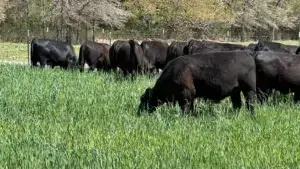When selling seed balance customer priorities and potential.
With tighter margins and constantly-evolving pest and disease issues, growers are looking to fine-tune their 2015 seed order. With those considerations, among others, they might struggle to find the right balance between genetics and traits among the products in the market.
Industry leaders say there’s no need for an extensive search as companies continue to expand product offerings in everything from seed to treatments and grower support services.
Eric Boersma, who manages Syngenta’s corn seed product division, says there isn’t always a perfect answer for whether genetics or traits should come first when helping farmers make corn and soybean seed purchases.
“I look at genetics as being the foundation for yield potential on that farm,” Boersma says. “What a grower ends up choosing for genetics is of utmost importance. If it doesn’t have that genetic potential to start with, you’re not going to get the most out of that crop.”
When helping farmers choose varieties for the 2015 growing season, Boersma says it’s important to identify priorities on the farm and then set measurable goals or targets in those priority areas.
AgReliant Genetics president and CEO Craig Newman says, “the best option is to go for yield.” When the price is lower, how else can [a farmer] make that difference up, he asks. “Go for the highest and best genetics and protect those genetics,” Newman says.
“What a grower ends up choosing for genetics is of utmost importance. If it doesn’t have that genetic potential to start with, you’re not going to get the most out of that crop.”
— Eric Boersma
Dan Anderson, U.S. corn product management lead for Monsanto, also believes growers should start with genetics but, considering all the options out there, won’t be forced to sacrifice traits as a result. “Early on, growers had to make a choice between the two, but we don’t see them making that trade off anymore,” Anderson says. “I advise farmers to decide what their yield potential is and then to set a yield target.”
Meanwhile, Drew Porter, DuPont Pioneer’s director of product marketing for the United States and Canada, says choosing between genetics and traits is fundamentally the same for both beans and corn, although there are generally more trait options available in corn. “It all starts with germplasm,” Porter says. “A crop’s yield potential and yield stability come from the germplasm.”
Choosing the right traits play that all-important role of minimizing risk. “These biotech traits minimize risk,” Anderson explains. “You can’t predict what those problems will be next year. One of the biggest mistakes growers can make is just to focus on the growing issues they had in 2014.”
Boersma adds that in choosing between genetics and traits, it depends on grower priorities, as far as which should come first, but both are certainly very important for different reasons. “Genetics set the yield foundation and traits do everything they possibly can to protect that yield and even increase it in some instances,” he says.
Price Influences
Seed company representatives say they’re well aware of where the commodity markets currently stand and how that affects not only next season’s seed choices but growers’ bottom lines.
“We realize the situation growers are in today with crop prices and kept that in mind when we started building our seed portfolio for 2015,” says Monsanto’s Anderson. He says company officials are encouraging farmers to discuss cash discounts and financing options with their seed dealers. The company has extended deadlines to apply for financing and lowered minimum amounts.
DuPont Pioneer has launched Encirca, a suite of tools designed to help operators manage everything from marketing to crop inputs. “To farmers’ credit, they recognize their seed purchasing decision as a central investment in their operations,” Porter says. “Our early orders indicate they continue to select products with elite germplasm.”
AgReliant’s Newman says the best and simplest advice he can give is to stay on course. “Everyone is worried about margins, but farmers should continue the good practices that got them where they are today,” he notes.
That’s especially true when it comes to crop rotation, Newman believes. With corn’s higher input costs, some growers might consider abandoning those acres for soybeans only. “Soybeans on soybeans have issues of their own,” he says. “Rotation offers a lot of benefits in terms of weed and disease pressures. Continuing good management systems is still the right plan.”
It’s not worth skimping on available seed treatment options either, notes Boersma. It’s important for farmers to get that crop off to the best possible start. For example if a farmer has uneven stands or light stands where some insect or disease has come in and weakened or wiped out plants, they’re going to be behind the eight-ball from the beginning, Boersma explains.
Anderson adds that although corn rootworm problems weren’t as severe this past year as in 2013, the pest was likely more prolific than most growers thought. “The weather kept the populations down, along with best management practices, but in our plots there was some significant pressure,” he reports.
Plants in the field might not have toppled or shown other symptoms, but the rootworms were there. It’s important that growers in areas that traditionally choose seed with rootworm in mind continue to rely on this technology, Anderson advises. Insecticides are another option, but the variability of their effectiveness doesn’t always make them a budget-wise choice.
“Products that perform consistent during those three years are what keep farmers in business.”
— Drew Porter
Newman says using seed that offers protection from especially tough pests, such as corn rootworm, can make the difference between 20 to 30 bushels per acre, as it did for many of their customers
in 2013. “These traits help mitigate the risk of a crop failure,” Newman says. “This year has not been as bad for the corn rootworm, but that can put people off-guard.”
A Holistic Decision Process
The experts agree it’s best for growers to approach their seed purchase holistically. Seed dealers and representatives should work with farmers on a post-harvest evaluation.
“When harvesting, the farmer gets to see how that hybrid performs across an entire field,” Anderson says. “They see things like standability and disease pressure. In the fall, they can sit down with their dealer and see how that hybrid performed across a wide range of conditions.”
These sit-downs with sales staff are also key to selecting new hybrids for the coming year. Some 5 percent to 15 percent of a grower’s seed purchase is comprised of first-offering products, he adds. “We continue to hear from growers who want more yield in both corn and soybeans, and we have new products to bring that into their portfolios,” he notes.
DuPont Pioneer’s Porter offers much the same advice. “It’s exciting to hear about the top-end yields farmers are realizing in 2014 with Pioneer genetics, but a post-harvest evaluation with a sales rep can be more fruitful,” he says.
The last three growing seasons alone have varied greatly. Drought conditions in 2012 to 2014’s abundant moisture and impressive yields have put marketing claims to the test.
“Products that perform consistently during those three years are what keep farmers in business,” Porter says.














